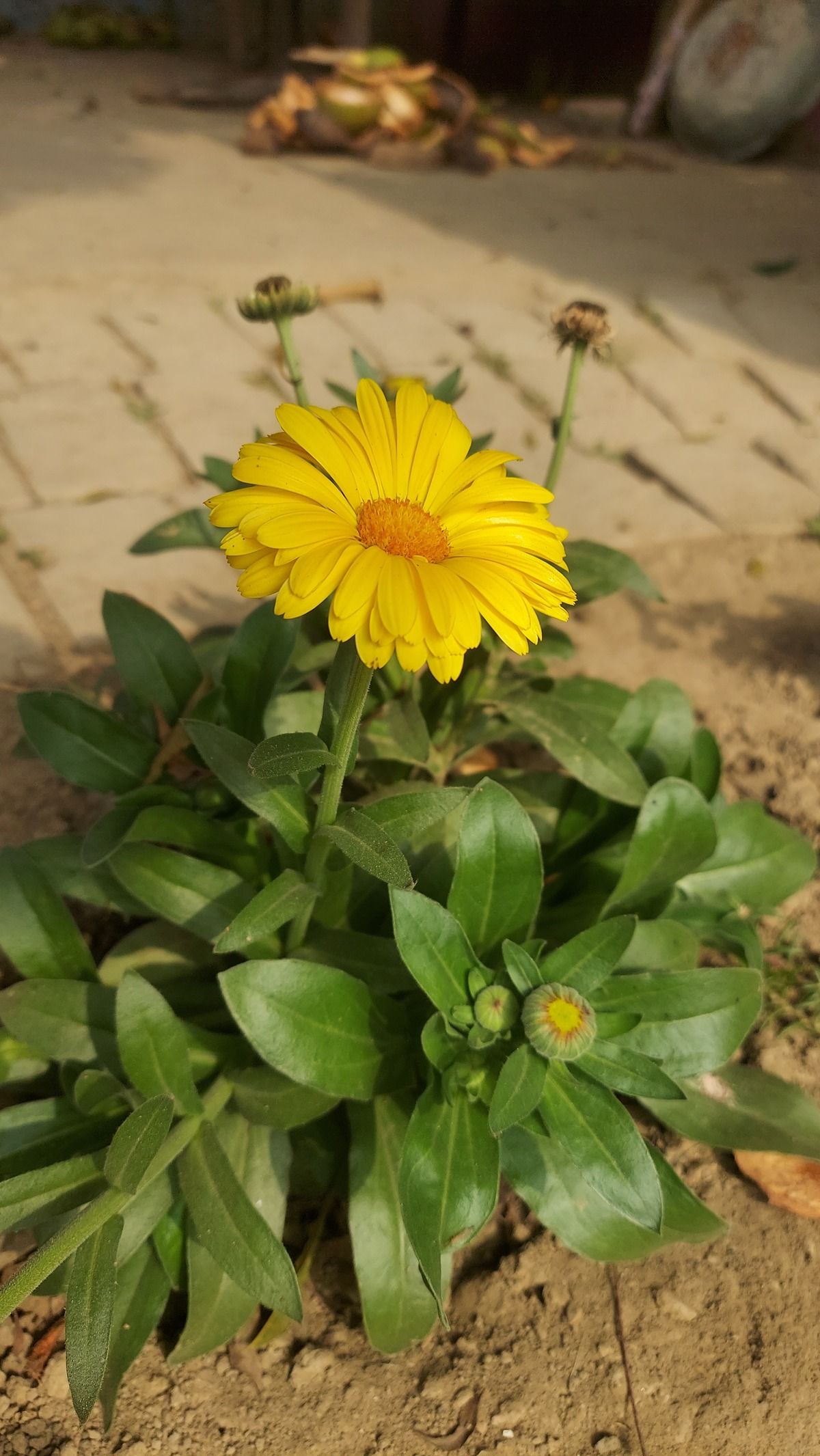
If you want to make your home garden beautiful, you should not miss Pot Marigold. You can look at the picture above. As you can see, it's a daisy-like bloom. I love this plant over a few other flowering plants due to its medical and culinary uses. In this article, I will guide you on growing and taking care of Pot Marigold in detail.
Basic info - Pot Marigold
Let's take a glance at some of the basic info about this plant:
| Scientific Name | Natives In | Sunlight | Fertilizer |
|---|---|---|---|
| Calendula officinalis | Southern Europe | Full Sun to Partial Shade | Monthly, Balanced Organic Fertilizer |
The blooming period of Pot Marigold varies with location
| USDA Hardiness Zone | Region | Blooming Period |
|---|---|---|
| 3-4 | Northern States (e.g., Minnesota, North Dakota) | June - September |
| 5-6 | Midwestern and Northeastern States (e.g., Illinois, Pennsylvania) | May - October |
| 7-8 | Southern and Coastal States (e.g., Virginia, Texas) | April - November |
| 9-10 | Southernmost States and Coastal California | Year-round with peak in Jan- April |
You can grow Pot Marigold from direct seed sowing or transplanting. (Or just buy a small plant from a nursery and plant it). Well, when I first planted this flowering plant in my home garden I purchased it from a local nursery.

Growing and Caring Guide
No matter which plant you are going to grow, you need to take care of these: (And pot marigold is no exception)
- Are you planting the plant in the right location?
- Is the soil perfect for the plant?
- What's the proper watering guide?
- Do we need to prune?
- Which type of fertilizer we should use to get the best results
- How to propagate this plant
I am here to guide you on each of the questions so that you can be a master in growing Pot Marigold.
You can grow it in the pot or plant outdoors in the ground.
Sow the seeds about ¼ inch deep and if you want to plant multiple pot marigolds side by side, then maintain 15 inches gap in between two adjacent plants.
Choosing the right location to plant a Pot Marigold
For annual plants, we have to work a bit harder than perennial plants to place the pots here and there again and again.
If your Pot Marigold is potted, I mean planted in a pot, let it enjoy the morning sun and afternoon sun and give partial shade when the sun is at its peak.
(Otherwise, you can witness the wilting leaves in the midday)
Soil Requirement
You need to prepare the soil first before planting Pot Marigold. Make your soil well-drained. I usually mix organic compost with normal garden soil.
Tip: If your garden soil is clay type, then it's not good at all for Pot Marigold. I have seen my grandpa mixing organic compost and a bit of cocopeat to make the soil much better and ready for planting.
To make an experiment I prepared clay soil and planted a Pot Marigold on it and the bloom was tiny.

Watering Guide for Pot Marigold
Regular water is mandatory until your plant is established. Thereafter you can only water it once the top inch of your soil is dry. Use your finger to check if the soil is dry or not.
Your pot must have holes at the bottom for water drainage.

This is how I make the holes.
Pruning of Pot Marigold
I do not prune pot marigolds like my other annual flowers. I only do deadheading to encourage more blooming. Just cut the spend flowers. Make sure you use sharp scissors to deadhead. Cut from the very bottom leaving 1 inch from the bottom. It will help the rest unopened buds to grow tall and bloom.
Fertilizer
I prefer organic over chemicals. In my case, I only add organic compost at the time of soil preparation. That's enough for your plant. If you want to add fertilizer, you can do that. But feed them slow-releasing fertilizer.
Propagation of pot marigold
It is really a heavy bloomer flowering plant. You have to deadhead spent flowers. If you leave a bloomed flower to dry on the plant, it will give you seeds for the next year. Just let it dry on the plant and store it in a cool and dry place.
Before sowing the seeds next year, keep the seeds in direct sunlight just a day before you sow them.
Share with your gardening friends, if you find this helpful.
